Experience the Rich Heritage of Langzhong Ancient City: A Photographer’s Dream
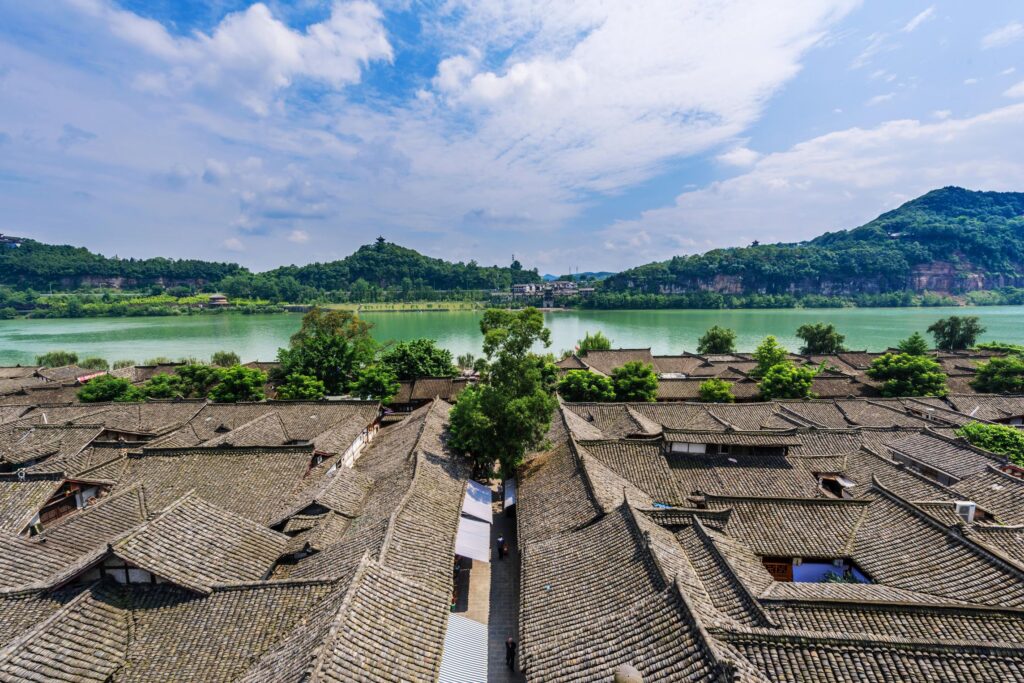
An Essential Guide to Visiting Langzhong Ancient City
Nestled in the heart of Sichuan Province, Langzhong Ancient City is a mesmerizing tapestry of history and culture that beckons travelers from around the globe. With over 2,300 years of rich heritage, this enchanting city stands as one of China’s four great ancient towns, alongside the likes of Pingyao, Lijiang, and Huizhou. As you wander through its charming streets, you’ll encounter a unique blend of traditional architecture, vibrant local customs, and stunning natural landscapes, all framed by the gentle flow of the Jialing River.
Langzhong is not just a feast for the eyes; it’s a sensory journey that immerses you in the essence of Chinese culture. From the majestic Zhangfei Temple, honoring a legendary general, to the tranquil Confucius Temple, where wisdom and learning are celebrated, every corner of this ancient city tells a story. Add to that the auspicious Feng Shui principles that guide its layout, and you’ll find Langzhong to be a harmonious blend of nature and human ingenuity.
Whether you’re a history buff, a lover of architecture, or simply in search of picturesque views, Langzhong Ancient City promises to captivate your heart. With its fascinating relics and welcoming atmosphere, it offers not just a glimpse into the past, but a vibrant canvas of life that continues to unfold today. Prepare to embark on an unforgettable adventure as you explore this hidden gem, where every moment is steeped in tradition and every view is a postcard from history.
In This Guide
- An Essential Guide to Visiting Langzhong Ancient City
- The Rich History and Legends of Langzhong Ancient City
- Main Highlights: What You Absolutely Can’t Miss
- Planning Your Visit: A Practical Guide
- Tickets: Prices, Booking, and Tips
- How to Get There: A Complete Transportation Guide
- Local Cuisine and Accommodation Nearby
- Frequently Asked Questions
- Final Thoughts on Your Trip
The Rich History and Legends of Langzhong Ancient City
Nestled in the picturesque northeast of the Sichuan Basin and flanking the meandering Jialing River, Langzhong Ancient City is a captivating testament to China’s rich heritage, boasting a history that stretches back over 2,300 years. Recognized as one of the four greatest ancient towns in the country, alongside Pingyao, Lijiang, and Huizhou, Langzhong is often celebrated for its unique layout, resembling a grand chessboard of orderly houses framed by lush hills and flowing waters, all harmoniously aligned according to the principles of Feng Shui.
The city’s roots trace back to the Warring States Period (476 BC – 221 BC), when it served as the capital of the ancient Ba Kingdom. In 314 AD, during the Qin Dynasty, Emperor Huiwen established a prefecture here, marking the beginning of Langzhong’s significance in China’s administrative history. Over the centuries, it transitioned through various political phases, even becoming the capital of Sichuan Province for 17 years during the early Qing Dynasty (1644 – 1911 AD). Today, Langzhong stands as a vibrant historical and cultural tourism hub, inviting visitors to explore its myriad attractions.
Langzhong’s diverse cultural landscape is deeply intertwined with significant historical events, legendary figures, and the birth of notable traditions. The city is recognized as the birthplace of the Chinese New Year, a celebration that resonates with millions around the globe. This connection to the Spring Festival is largely credited to Luoxia Hong, a renowned calendar scholar from the Western Han Dynasty, who established the first day of the lunar month as the start of the new year.
Among the most revered sites in Langzhong is the Zhangfei Temple, honoring the legendary warrior Zhang Fei, who defended the city during the tumultuous Three Kingdoms Period (220 – 280 AD). Built over 1,700 years ago, the temple stands as a symbol of local devotion and historical significance, having undergone restoration while retaining its majestic presence. Similarly, the Ancient Examination Hall reflects the city’s intellectual heritage, serving as a venue for scholars to showcase their talents during the imperial examinations of the Qing Dynasty.
Architecturally, Langzhong is adorned with numerous landmarks, including the towering Zhongtian Tower, a magnificent structure originally erected in the Tang Dynasty (618 – 907 AD). This four-story edifice not only serves as a visual anchor for the city but also provides stunning views of the surrounding landscape and the intricate Feng Shui layout. The Huaguang Tower, hailed as the “No. One Tower in Langzhong,” further enriches the skyline, offering panoramic vistas that have inspired poets and artists for generations.
The city’s cultural tapestry is further woven with religious beliefs that span across Buddhism, Taoism, and various other faiths, reflected in the array of temples, mosques, and churches that coexist within its boundaries. Notable sites such as the Confucius Temple and Yuanjue Temple commemorate the philosophical and spiritual legacies that have shaped Langzhong’s character.
As you stroll through the ancient streets, you’ll uncover not just the remnants of a storied past but also the legends that have come to define this enchanting locale. Langzhong Ancient City is not just a destination; it is a living narrative, inviting international travelers to immerse themselves in its rich history, legends, and cultural significance. Whether you’re exploring its ancient examination halls, venerating at its temples, or simply absorbing the serene landscapes, Langzhong promises an unforgettable journey through time.
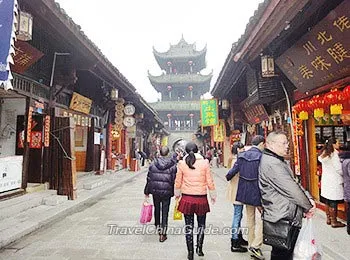
Langzhong Ancient City.
Main Highlights: What You Absolutely Can’t Miss
Langzhong Ancient City, a hidden gem in Sichuan Province, is a destination steeped in history and cultural richness. With its origins dating back over 2,300 years, this ancient town is a captivating blend of remarkable architecture, historical landmarks, and stunning natural landscapes. Here are the must-see highlights that you absolutely can’t miss during your visit.
Zhangfei Temple
One of the city’s most revered sites, Zhangfei Temple, honors the legendary warrior Zhang Fei from the Three Kingdoms period. This beautiful quadrangle, reconstructed during the Ming and Qing dynasties, showcases intricate designs and majestic scale. Take a moment to appreciate the history and dedication of the locals who built this temple in Zhang Fei’s memory after his years of service to the town.
Ancient Examination Hall (Gongyuan)
Step back in time at the Ancient Examination Hall, which once served as a venue for aspiring scholars to take their imperial exams. With over 300 years of history, this site offers a fascinating glimpse into the ancient Chinese education system and the rigorous selection process for government officials. The well-preserved structure stands as a testament to the importance of education in Chinese society.
Zhongtian Tower
As one of the city’s prominent landmarks, Zhongtian Tower, also known as Sipai Tower, is a must-visit. Originally built during the Tang Dynasty, this four-story wooden structure is not only an architectural marvel but also holds significant Feng Shui importance. Climb to the top for breathtaking views of the city and its harmonious layout, dictated by centuries-old Feng Shui principles.
Huaguang Tower
Dubbed the “No. One Tower in Langzhong,” Huaguang Tower is the oldest and tallest structure in the area. Perched at the southern edge of the ancient town, it offers panoramic views of the Jialing River and the surrounding landscapes. This iconic tower is a perfect spot for photography and appreciating the beauty of Langzhong’s natural backdrop.
Confucius Temple (Wenmiao)
Explore the serene atmosphere of the Confucius Temple, where you can pay homage to the great philosopher. Recently restored, the temple is a symbol of scholarly pursuit and moral education. Attend one of the annual ceremonies held in honor of Confucius to gain deeper insight into Chinese traditions and values.
The Heavenly Palace
Dive into the mystical world of Feng Shui at the Heavenly Palace, where astrological studies once took place. This site, originally built during the Tang Dynasty, reflects the profound respect for Feng Shui that runs throughout Langzhong. Explore the accompanying Feng Shui Museum to learn more about the principles that shaped the city’s layout and architecture.
White Pagoda
Standing tall since the late Ming Dynasty, the White Pagoda offers stunning views of the Jialing River and the surrounding mountains. Climb its thirteen stories to witness breathtaking panoramas of the ancient city, making it a perfect spot for those seeking a blend of history and natural beauty.
Scenic Nature Spots
Beyond its rich history, Langzhong is also home to beautiful natural landscapes. The Jinping Mountain scenic area, renowned for its breathtaking beauty, has inspired countless poets and artists throughout history. For a peaceful retreat, visit Panlong Mountain Forest Park, where lush greenery and fresh air create a tranquil environment perfect for hiking and contemplation.
Spring Festival Culture Theme Park
For a unique cultural experience, don’t miss the Spring Festival Culture Theme Park. This vibrant space celebrates the origins of the Chinese New Year, showcasing traditional customs and festivities. It’s an excellent place to learn about the significance of the Spring Festival and its impact on Chinese culture.
Local Cuisine and Markets
Finally, no visit to Langzhong is complete without indulging in its local cuisine. Stroll through the Langzhong Snack Store to sample regional delicacies, and immerse yourself in the lively atmosphere of the local markets, where traditional crafts and goods are on display.
Langzhong Ancient City is not just a destination; it is a journey through time, culture, and nature. With its array of historical sites, scenic views, and culinary delights, this ancient town promises an unforgettable experience for every traveler.
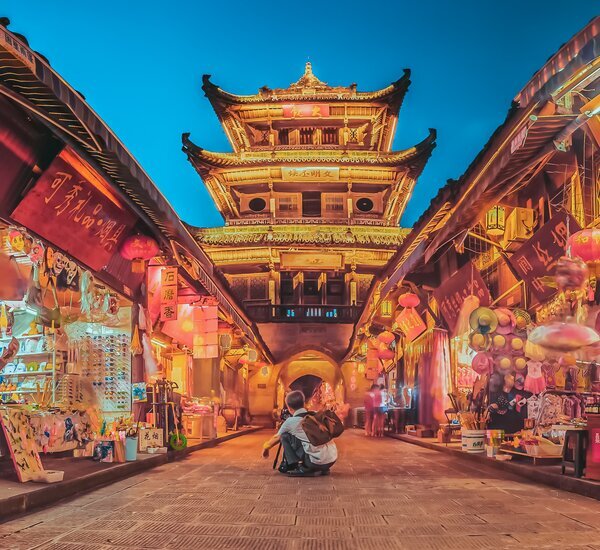
Langzhong Ancient City.
Planning Your Visit: A Practical Guide
Langzhong Ancient City, a historical gem nestled in Sichuan Province, offers an insightful glimpse into China’s rich cultural heritage. With its picturesque landscapes, ancient architecture, and vibrant traditions, this city is an essential stop for international travelers seeking an authentic experience. Here’s a practical guide to help you plan your visit.
Getting There
By Air:
Langzhong does not have its own airport, but you can fly into one of the nearby airports:
– Chengdu Shuangliu International Airport
– Chongqing Jiangbei International Airport
– Nanchong Gaoping Airport
From any of these airports, you will need to take a bus to reach Langzhong. Several bus companies operate regularly, ensuring a convenient journey.
By Train:
If you prefer to travel by train, you can head to either Nanchong or Guangyuan railway stations. Both stations have frequent bus services that will take you to Langzhong.
By Bus:
For those already in Sichuan, buses are a popular and efficient option. Regular services run from major cities like Chengdu, Chongqing, and Nanchong directly to Langzhong.
Getting Around
Once you arrive in Langzhong Ancient City, exploring the area is easy. The city offers:
– Sightseeing Buses: Ideal for tourists wanting to cover a lot of ground with ease.
– Boats: For a unique view of the city from the water.
– Taxis: Affordable and readily available for short trips within the city.
Best Time to Visit
The ideal time to visit Langzhong is during the spring (March to May) and autumn (September to November) months when the weather is pleasant, and the landscapes are particularly beautiful. Avoid visiting during the rainy season, which typically occurs in summer.
Key Attractions
Langzhong Ancient City is replete with historical sites and cultural landmarks. Here are some must-visit spots:
- Zhangfei Temple: This site honors the legendary general and guardian of Langzhong. The temple is a stunning example of ancient architecture.
- Ancient Examination Hall: A testament to the city’s scholarly past, this hall offers insights into the traditional imperial examination system.
- Zhongtian Tower: Climb to the top for panoramic views of the city and its Feng Shui layout.
- Feng Shui Museum: Explore the principles of Feng Shui that influenced the city’s design and layout.
- Jinping Mountain Scenic Area: Perfect for hiking and soaking in the natural beauty surrounding the ancient city.
Opening Hours and Admission Fees
The city is open year-round, but hours vary by season:
– May 1 – October 7: 08:00 AM – 06:30 PM
– October 8 – April 30: 08:00 AM – 06:00 PM
Admission fees for key attractions range from CNY 4 to CNY 120. A combined ticket for popular sites is available for CNY 110, valid for three consecutive days.
Cultural Experiences
Langzhong is not only about ancient sites; it’s also a hub for cultural experiences. Don’t miss:
– Local Cuisine: Indulge in Sichuan delicacies at local eateries. Try the spicy hot pot and traditional snacks that are unique to the region.
– Festivals: If your visit coincides with the Spring Festival, you’ll experience the vibrant celebrations and customs associated with the Chinese New Year, which originated in Langzhong.
Accommodation
Langzhong offers a range of accommodations, from budget hostels to mid-range hotels. Look for options within walking distance of the ancient city for easy access to attractions.
Tips for Travelers
- Language: While some locals may speak basic English, having a translation app or phrasebook can be helpful.
- Cash: Many local vendors may not accept credit cards, so carry some cash (Chinese Yuan).
- Respect Local Customs: Be mindful of local traditions and customs, particularly when visiting temples and cultural sites.
With its rich history and breathtaking scenery, Langzhong Ancient City is sure to leave you with unforgettable memories. Plan your visit today to explore this enchanting corner of Sichuan Province!
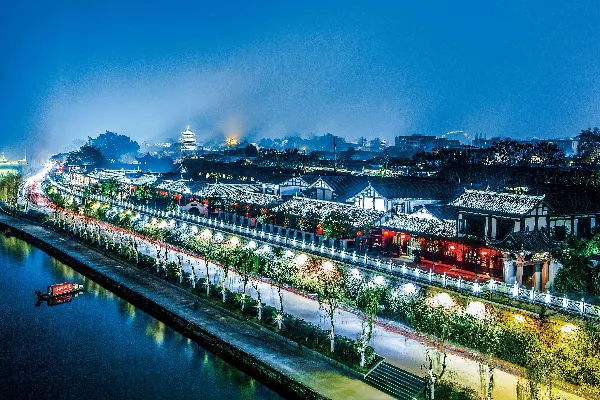
Langzhong Ancient City.
Tickets: Prices, Booking, and Tips
Visiting Langzhong Ancient City is a journey back in time, offering a rich tapestry of history, culture, and stunning landscapes. To make the most of your visit, understanding ticket prices, booking options, and tips for a smooth experience is essential. Here’s what you need to know:
Ticket Pricing
Langzhong Ancient City has various ticket options that cater to different interests. Here’s a detailed breakdown:
- Through Ticket:
- Price: CNY 110
-
Includes: Access to Zhangfei Temple, Ancient Examination Hall, Zhongtian Tower, and Confucius Temple. This ticket is valid for three consecutive days, allowing you to explore at a leisurely pace, with each site accessible once.
-
Individual Attractions:
- Zhangfei Temple: CNY 50
- Ancient Examination Hall: CNY 50
- Zhongtian Tower: CNY 15
- Confucius Temple: CNY 30
- Huaguang Tower: CNY 15
- Heavenly Palace: CNY 30
- Jinping Mountain: CNY 20
- Prayer Hall (Spring Festival Culture Theme Park): CNY 20
- No.1 Scholar Cave: CNY 4
- White Pagoda Scenic Area: CNY 20
- Giant Buddha Temple: CNY 16
- Dongshan Garden: CNY 10
- Panda Amusement Park: CNY 120
Discounts
- Children: Those under 3.9 feet (1.2 meters) can enter for free.
- Young Visitors: Ages 6-18 enjoy a 50% discount on ticket prices.
Booking Tips
- Purchase Options: Tickets can be bought at the entrance or online through local travel platforms, which may offer additional discounts or packages.
- Best Time to Visit: To avoid crowds, consider visiting on weekdays or during off-peak seasons. The city is especially beautiful in spring and autumn when the weather is mild.
Getting There and Around
Langzhong Ancient City, though not served by airports or railways, is easily accessible by bus from major cities like Chengdu, Chongqing, and Nanchong. Here are your options:
- By Bus: Direct buses operate from major cities to Langzhong.
- By Air: Fly into Chengdu Shuangliu International Airport or Chongqing Jiangbei International Airport, then take a bus to Langzhong.
- By Train: Arrive at Nanchong or Guangyuan railway stations, then connect to a local bus.
Local Transportation
Once in Langzhong, getting around is straightforward:
– Sightseeing Buses and Boats: These provide convenient tours of the ancient town.
– Taxis: Affordable and readily available for hire if you prefer a more direct route to specific locations.
Final Tips
- Plan Your Itinerary: With numerous historical and cultural sites, plan your visit to ensure you hit all the highlights.
- Stay Hydrated: Especially during the summer months, carry water as you explore the ancient streets.
- Respect Local Customs: Many sites have cultural significance, so be mindful of local traditions and practices.
With this information in hand, you’re well-equipped to enjoy the enchanting experience that Langzhong Ancient City has to offer!
How to Get There: A Complete Transportation Guide
Reaching Langzhong Ancient City, a hidden gem nestled in the scenic Sichuan Basin, is relatively straightforward, thanks to its strategic location and well-connected transportation options. Here’s how to navigate your way to this historic town and explore its enchanting surroundings.
Getting to Langzhong Ancient City
By Air
While Langzhong does not have its own airport, you can easily access it via three nearby airports:
-
Chengdu Shuangliu International Airport (CTU): This major airport offers numerous domestic and international flights. From here, you can take a bus directly to Langzhong.
-
Chongqing Jiangbei International Airport (CKG): Similar to Chengdu, this airport provides good connectivity. Buses from Chongqing to Langzhong are readily available.
-
Nanchong Gaoping Airport (NAO): The closest airport to Langzhong, it has fewer flights but still offers a convenient option for reaching the ancient city.
Upon arrival at any of these airports, look for the bus terminals where you can catch a bus to Langzhong.
By Train
If you prefer traveling by train, you can head to either Nanchong Railway Station or Guangyuan Railway Station. Both stations are well-connected to major cities in Sichuan province. From either station, you can take a local bus or taxi to Langzhong, making it a hassle-free option for travelers.
By Bus
For those already in Sichuan, buses are the most convenient option to reach Langzhong. Frequent services run from major cities including:
- Chengdu: Buses depart regularly from various stations.
- Chongqing: Direct buses are available and take approximately 4-5 hours.
- Nanchong: This city has multiple daily buses to Langzhong, making it a quick trip.
- Guangyuan: Similar to Nanchong, buses run frequently and are a great choice for travelers coming from this area.
Getting Around Langzhong Ancient City
Once you’ve arrived in Langzhong, exploring its ancient streets and cultural attractions can be an adventure in itself. Here are some options for getting around:
Sightseeing Buses and Boats
Langzhong offers dedicated sightseeing buses and boats, providing a unique way to see the city’s highlights while enjoying the scenic views of the Jialing River and surrounding hills.
Taxis
Taxis are readily available and very affordable. They are a convenient choice for getting around if you prefer a more private mode of transport.
Walking
The ancient city is compact and pedestrian-friendly. Walking through its historic streets allows you to fully immerse yourself in the local culture, discover hidden gems, and enjoy the stunning architecture at your own pace.
Tips for Travelers
- Plan Your Arrival: Check bus schedules and book tickets in advance during peak seasons to ensure availability.
- Language: While some signs may be in English, having a translation app can be helpful, especially when communicating with local drivers.
- Cash: Keep some cash handy, as not all places accept credit cards.
With its rich history and stunning landscapes, Langzhong Ancient City is well worth the journey. Enjoy your travels!
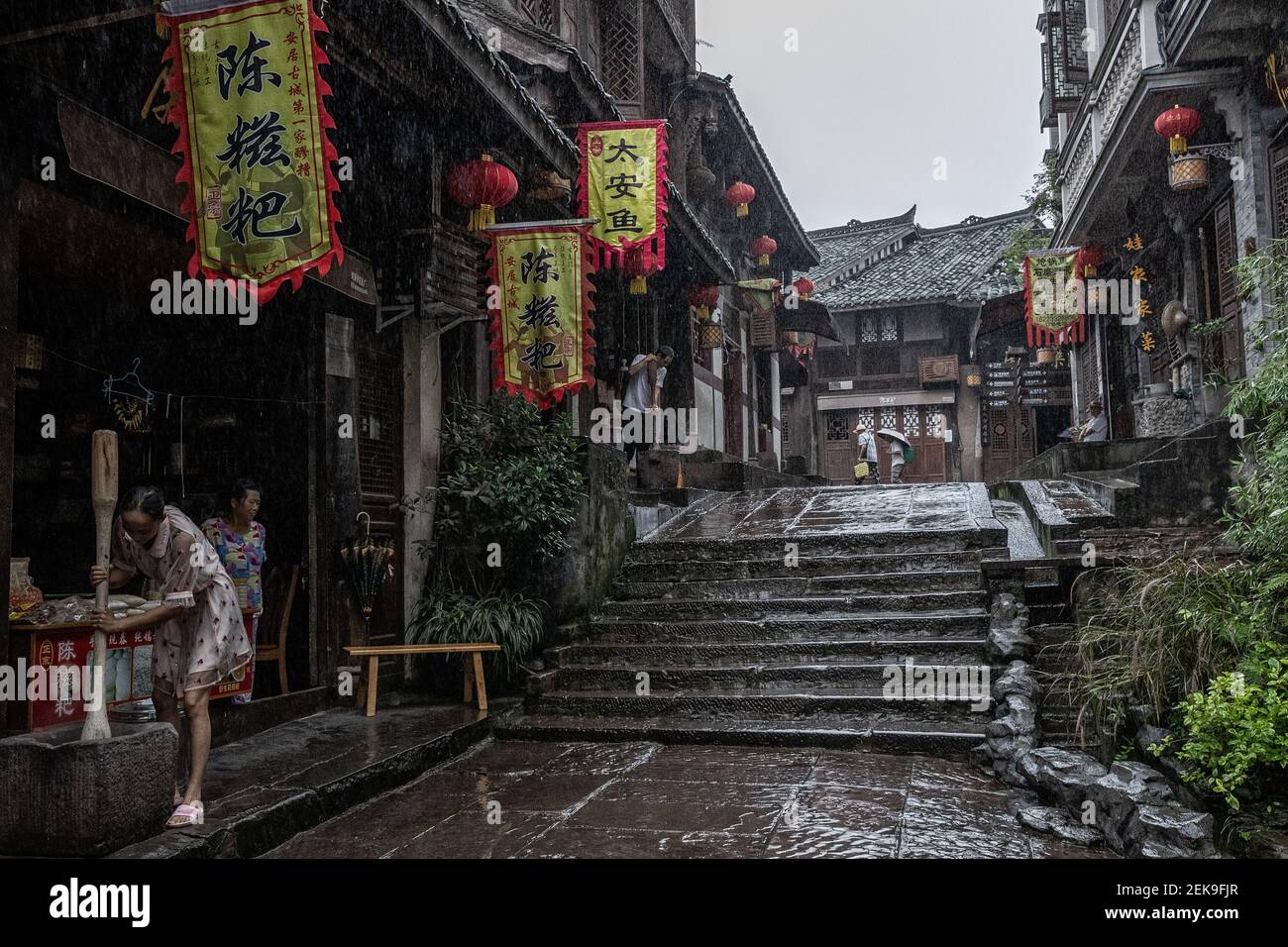
Langzhong Ancient City.
Local Cuisine and Accommodation Nearby
When exploring the charming Langzhong Ancient City, you’re in for a treat—not just in terms of history and culture, but also for the delightful local cuisine and comfortable accommodations nearby.
Local Flavors to Savor
Langzhong is renowned for its rich Sichuan culinary traditions. As you wander through the ancient streets, make sure to indulge in some of the local specialties:
-
Langzhong Noodles (阆中面): These handmade noodles served with a spicy, savory broth are a must-try. You can find numerous noodle shops scattered throughout the city, each offering their unique twist on this classic dish.
-
Hot Pot (火锅): Sichuan hot pot is famous for its numbing spiciness. Enjoy a communal dining experience where you can cook a variety of fresh ingredients in a bubbling broth right at your table.
-
Pickled Vegetables (腌菜): Locally pickled vegetables are a staple side dish that complements many meals, adding a tangy crunch to your dining experience.
-
Dried Fish (干鱼): A popular snack among locals, dried fish is often seasoned with various spices. Grab a bag from a street vendor for a quick bite as you explore.
-
Sichuan-style Dumplings (水饺): These dumplings are typically filled with pork and vegetables, and they’re best enjoyed with a spicy dipping sauce.
Where to Stay
After a day of exploring the ancient city, you’ll want a cozy place to rest your head. Here are some nearby accommodations that cater to different preferences and budgets:
-
Langzhong Ancient City Hotel (阆中古城酒店): This charming hotel is located right in the heart of the ancient city, offering easy access to major attractions. The rooms are tastefully decorated, combining modern comforts with traditional elements.
-
Jialing River View Hotel (嘉陵江畔酒店): Situated along the scenic Jialing River, this hotel boasts stunning views and a relaxing environment. It’s an excellent choice for travelers looking to unwind after a day of sightseeing.
-
Langzhong Inn (阆中客栈): For those seeking a more traditional experience, this inn offers cozy accommodations with local decor. The staff is friendly and can provide insider tips on the best places to eat and explore.
-
Zhongtian Tower Boutique Hotel (中天塔精品酒店): Just a stone’s throw away from the iconic Zhongtian Tower, this boutique hotel provides a unique blend of comfort and style. With well-appointed rooms and stunning views, it’s perfect for a romantic getaway.
-
Hostels and Guesthouses: If you’re traveling on a budget, there are several hostels and guesthouses in the area, offering dormitory-style accommodations and communal spaces to meet fellow travelers.
No matter where you choose to dine or stay, Langzhong Ancient City promises a memorable experience filled with culinary delights and comfortable lodgings, making your journey through this historical treasure even more enjoyable.
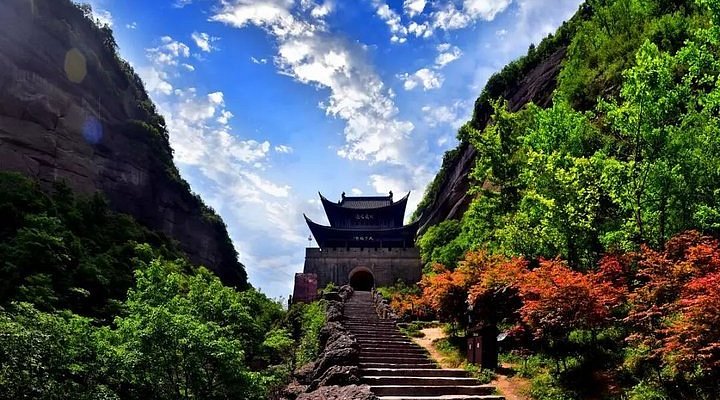
Langzhong Ancient City.
Frequently Asked Questions
Frequently Asked Questions about Langzhong Ancient City
1. What is the best time to visit Langzhong Ancient City?
The ideal time to visit Langzhong is during the spring (March to May) and autumn (September to November) months when the weather is mild and pleasant. The peak tourist season is around the Chinese New Year when the city celebrates its rich cultural heritage.
2. How do I get to Langzhong Ancient City?
Langzhong does not have its own airport or railway station. The best way to reach the city is via bus from major cities like Chengdu, Nanchong, or Chongqing. Alternatively, you can fly into Chengdu Shuangliu International Airport or Nanchong Gaoping Airport and take a bus from there.
3. Are there any entry fees to visit the attractions in Langzhong?
Yes, there are entry fees for various attractions. A combined ticket for multiple sites costs CNY 110, which is valid for three consecutive days. Individual site fees range from CNY 4 to CNY 120, depending on the attraction.
4. Is Langzhong Ancient City family-friendly?
Absolutely! Langzhong offers a variety of activities suitable for families, including scenic parks, historical sites, and the Panda Amusement Park, which features rides and attractions for children and adults alike.
5. What should I wear while visiting Langzhong Ancient City?
Dress comfortably and consider the weather. In spring and autumn, light layers are advisable, while summer may require breathable clothing. Don’t forget sturdy shoes, as you may want to explore the ancient streets and hike around the scenic areas.
6. Are there any guided tours available?
Yes, guided tours are available, and they can enhance your experience by providing insights into the rich history and culture of Langzhong. You can book tours through local travel agencies or inquire about options at your accommodation.
7. What local delicacies should I try during my visit?
Langzhong is known for its delicious local snacks. Be sure to try the spicy hotpot, dumplings, and various street foods available at local vendors. Don’t miss out on the famous Langzhong rice cakes!
8. Can I find English-speaking services in Langzhong?
While English is not widely spoken, some tourist areas, hotels, and restaurants may have English-speaking staff. It’s a good idea to have translation apps or phrasebooks handy to assist with communication.
Final Thoughts on Your Trip
As you wrap up your journey through Langzhong Ancient City, take a moment to reflect on the tapestry of history, culture, and natural beauty that this remarkable destination offers. From the serene banks of the Jialing River to the intricate architecture of temples and towers, every corner reveals a story waiting to be discovered. Whether you’ve wandered the ancient streets, marveled at the architectural wonders like the Zhangfei Temple and Huaguang Tower, or enjoyed the vibrant local flavors at a bustling snack store, Langzhong leaves an indelible mark on the heart.
This city, steeped in over 2,300 years of history, is not just a place to visit but an experience to live. It invites you to delve into its rich past, embrace its diverse culture, and appreciate its stunning landscapes. As you depart, carry with you the essence of Langzhong and the warmth of its people, who continue to share their heritage with the world. No matter where your travels take you next, the memories made in Langzhong will surely inspire you to seek out more hidden gems across the globe. Safe travels!